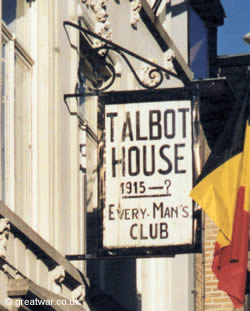The Story of Talbot House (Toc H), Poperinge
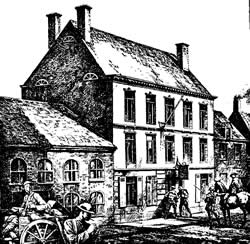
|
On 11 December 1915 the house at number 43 Gasthuisstraat (at that time the street was called by its French name - Rue de l'Hôpital) opened its doors for the first time, welcoming British soldiers to a new club.
The large house was owned by a wealthy brewer, Monsieur Coevoet Camerlynck. In the early summer of 1915 some German shrapnel shells had landed in the garden and damaged the rear of the house.
Having removed his family and all his belongings M. Camerlynck was pleased to offer the empty house for rent to the British Army for 150 Francs a month. Two conditions of the lease were that the house was to be made weatherproof and a large safe was to be removed from the front room.
Opening of an Every-Man's Club
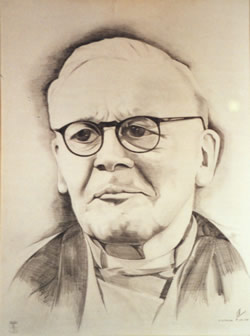
|
An Army Chaplain the Reverend Philip “Tubby” Clayton saw a use for the property as a soldier's club. It became a rare place where soldiers could meet and relax regardless of rank, an Every-Man's Club.
A notice was hung by the front door bearing the message:
“All rank abandon, ye who enter here.”
Furnishing the House
One of the conditions for allowing the military to occupy the house in the owner's absence was to help remove all the furniture; including a large safe. The house therefore needed to be re-furnished. In an attempt to make the house more homely soldiers quickly acquired all sorts of pieces of furniture including a piano.
Gifts of soft furnishings were donated by people in England and books arrived by post or were left by soldiers to fill the shelves of the library. A soldier's cap badge was to serve as a pledge for borrowing a book from the library.
Naming the House “Talbot House” and “TOC H”
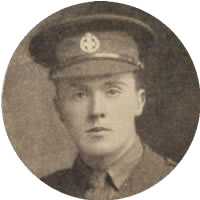
|
Initially it was proposed that the House was named Church House. According to Padre Neville Talbot,
“the staff of our Division saw a scarecrow in the name and smelt tracts.”
And so the house was named Talbot House in memory of Lieutenant Gilbert W L Talbot, aged 23, who was the brother of Padre Neville Talbot. Gilbert was serving with 7th Battalion The Rifle Brigade when he was killed at Hooge in the Ypres Salient on 30 July 1915. His death came during a British counter-attack following the German Army's first use of liquid fire on the Western Front. Gilbert was the youngest son of the Lord Bishop Talbot of Winchester and left a career of brilliant promise unfulfilled. He is buried in Sanctuary Wood British Military Cemetery, Zillebeke near Ieper.
The name Talbot House soon became known to the soldiers of the Ypres Salient in a shortened form of “TOC H”. TOC was the British Army signaller's code for ‘T’, and H was ‘H’.
The Upper Room
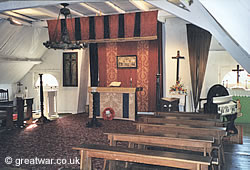
|
The loft, which was previously used for drying hops, was converted into a chapel and became known as “the Upper Room”. On the initiative of the soldiers the chapel was furnished with an altar made from a carpenter's bench found in the garden shed. Candlesticks for the altar were made from bedposts. A portable organ known as a 'groan-box' was used for musical accompanyment. Wooden benches were made or acquired from damaged churches. The altar cloth was donated.
From the early days of its creation the chapel in “the Upper Room” offered a peaceful haven for hundreds of soldiers taking a brief respite from the trenches.
Gilbert Talbot's Wooden Cross
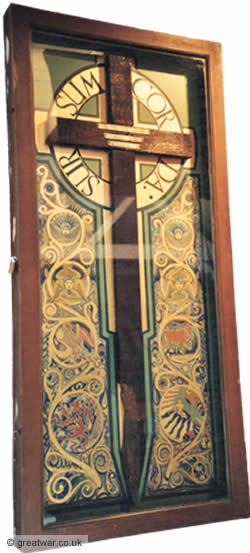
|
One of the items of special interest in the Upper Room is the original wooden cross which marked the grave of Lieutenant Gilbert Talbot. In the mid 1990s the doorbell rang at Talbot House. When the door was opened there was no-one to be seen in the street, but there was a large black plastic bag left on the doorstep. On opening the bag it was found to contain Gilbert Talbot's original wooden cross. The metal strips attached to the cross contained the following details:
LIEUT. G. W. K. TALBOT
7/ RIFLE BDE
30-7-15
The whereabouts of this cross up to that moment still remain unknown, but possibly someone had been keeping it safe for all these years. Most of the original crosses were burned when they were replaced after the Great War with stone headstones.
The Concert Hall
In 1916 the House became too small for the number of soldiers visiting it. The first floor of the neighbouring hop store was taken over and used for church services attended by large groups. Soon the storehouse, first called Church Hall, then Concert Hall, was used for other purposes and activities such as lessons, lectures, movies, concerts, debates, etc. Illusionists, poets and comedians gave shows. The ‘artistic director’ conducted the house orchestra and the theatrical company. Talbot House with its Concert Hall grew and became one of the most important institutions of the British Army.
Toc H After the Great War: 1919
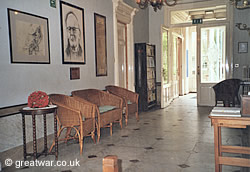
|
When the Great War was over Monsieur Camerlynck, the hop merchant, returned. However, he was overwhelmed by the number of ex-soldiers who came knocking at the door to see the old house again, and put it up for sale. In 1929 Lord Wakefield of Hythe bought the house for £9,200 and donated it to the Talbot House Association. This is the reason for the official twinning of Poperinge with Hythe in Kent, England.
Toc H in The Second World War: 1940-1944
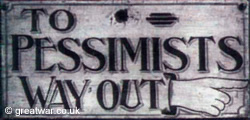
|
During the Second World War Poperinge was occupied by the German Army from May 1940 to 6th September 1944. Fearing that the historically valuable items inside Talbot House might be at risk at this difficult time, a team of local people secretly emptied the complete contents of the house, split the collection throughout the town, finding a hiding place for each single painting, book or piece of furniture.
The German town commandant was puzzled that the house was found to be empty, but accepted the idea that it could be used as a headquarters and officers' mess. This gave a certain reassurance to the local people that the house would more likely be protected from vandalism by its new occupiers.
Unbeknown to the German officers living in the house, a tunnel under the garden was being used to help Allied aircrew to escape through Belgium! With the liberation of Poperinge in 1944 every single item was brought back to Talbot House.
The Lamp of Maintenance
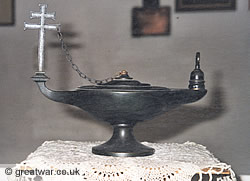
|
The oil lamp used by Padre Tubby Clayton in the Upper Room at Talbot House is known as the Lamp of Maintenance.
“The World Chain of Light”
Every year on Tubby Clayton's birthday the Lamp of Maintenance is lit in the Upper Room at Talbot House in Poperinge for 24 hours. It is lit from 9pm on the night of 11th December until 9pm on 12th December. The lighting at Toc H Poperinge is the start of a series of lamp lightings in all the Toc H branches around the world.
Purchase and Restoration of The Concert Hall: 1996
In 1996 the Talbot House Association had the opportunity to buy the Concert Hall, a building which had been neglected over the years. Early in 2003 the restoration and reconstruction of the building was started, and on May 15th 2003 the former hop store was reopened. The Concert Hall is very important to Talbot House. The historical unity with the House has been restored and new facilities are available for visitors.
Through the years Talbot House has welcomed many famous visitors, amongst them HM Queen Elizabeth II, the late Belgian King Boudewijn and the present Belgian King Albert II.
Location of Talbot House
Talbot House is located at 43 Gasthuisstraat in Poperinge close to the town square. The front door of Talbot House is no longer used as a visitor's entrance, except for special occasions. The entrance to the museum for Talbot House is situated in Pottestraat, around the corner from the Talbot House front door.
Related Topics
Talbot House (TOC H): A Living Museum
Find out more about the living museum which is Talbot House (Toc H), information for visitors and guest accommodation:
Talbot House (TOC H): A Living Museum
Museums in the Ypres Salient
For listing of all the WW1 related museums in the Ypres Salient battlefield area see our page at:
Related Reading
Sorry, no image available
Plain Tales from Flanders
by P B Clayton
Copies of this book are still usually available to buy second-hand. Printed as a first edition in 1929, Padre Tubby Clayton tells the story of the founding of Talbot House (Toc H). ASIN: B000LAKOSM.

On the Western Front: Soldiers Stories from France and Flanders
by John Laffin
This book, by the renowned historian the late John Laffin, portrays the life of the soldier on the Western Front in stories told by the men themselves, from their experience of the trenches, life behind the lines, in the military hospitals and their time spent in billets. ISBN-10: 0750935480 and ISBN-13: 978-0750935487.

A Song in the Night
by Julie Maria Peace
A novel about how the lives of two people, Rosie and a man fighting on the Western Front almost a century earlier, become entwined as the result of Rosie's chance discovery in a bookshop. The story features visits to Talbot House (Toc H) by soldiers in the First World War. ISBN-10: 1908596635 and ISBN-13: 978-1908596635.
Acknowledgements
Tales of Talbot House, Everyman's Club in Poperinghe & Ypres 1915-1918, by P B Clayton, MC, FSA, p. vii

